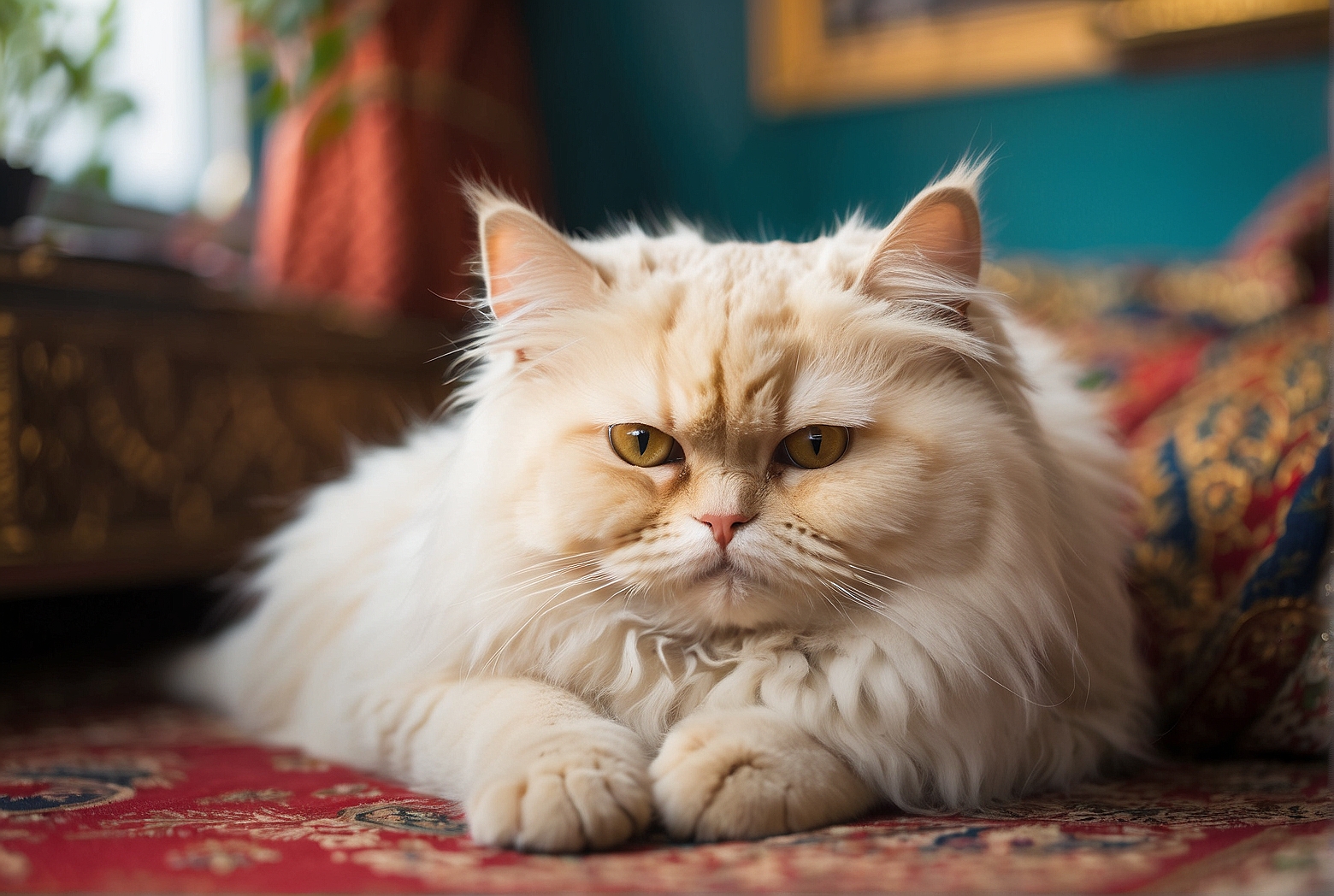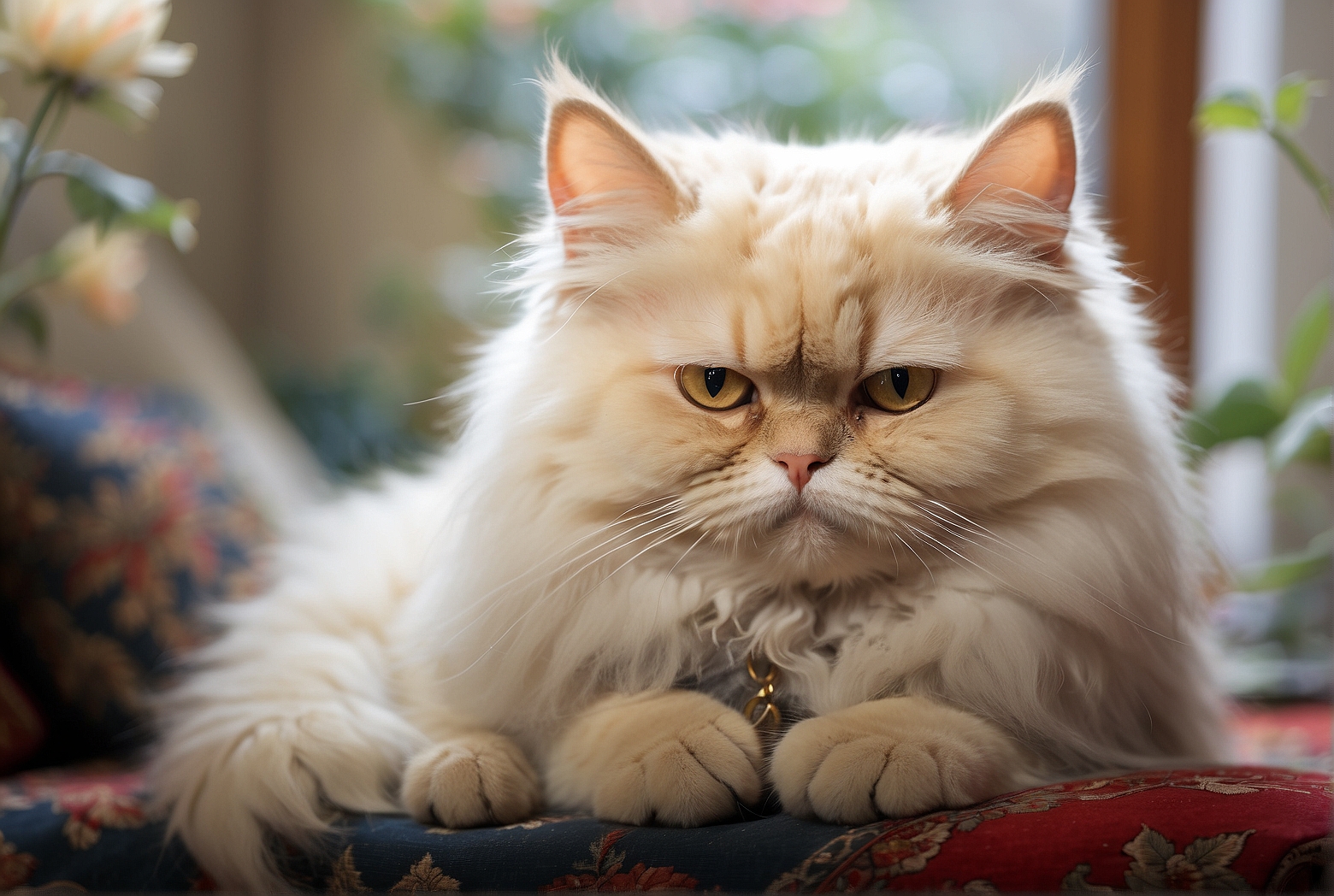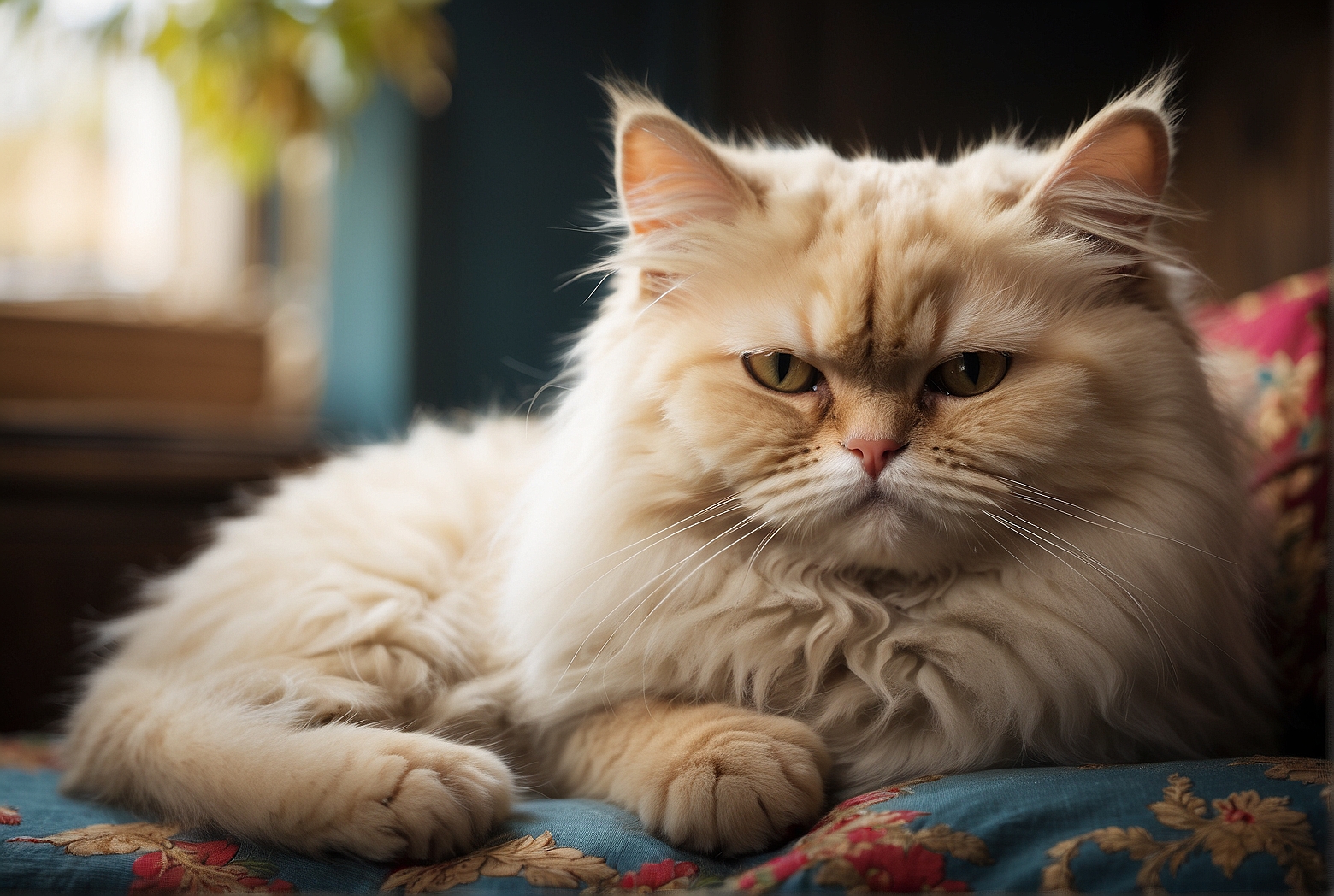Have you ever wondered if Persian cats are as lazy as they seem? Well, it’s time to uncover the truth! Persian cats with their luxurious coats and captivating eyes often give off the impression of being couch potatoes. But are they really as lazy as they appear to be? Stay tuned to find out as we delve into the world of these adorable feline companions and uncover the secrets behind their seemingly relaxed lifestyles!
Characteristics of Persian Cats
Physical Appearance
Persian cats are known for their distinct physical appearance. They have a round face with a short, stubby nose and large round eyes. Their coats are long and fluffy, and come in a variety of colors and patterns. Persian cats have a sturdy build, with short legs and a broad chest. Their tails are bushy and their paws are small and compact. Overall, their appearance is elegant and luxurious, making them one of the most recognizable cat breeds in the world.
Temperament
Contrary to the popular belief that Persian cats are lazy, they actually have a calm and gentle temperament. They are known for their laid-back nature and love for relaxation. Persians enjoy being in a peaceful environment and prefer a slow-paced lifestyle. They are not typically hyperactive or excessively demanding, making them well-suited for those seeking a companion that thrives in a tranquil setting. Persians are affectionate and enjoy being pampered, often seeking out their owner’s attention and affection.
Perception of Laziness
General Stereotype
One of the common stereotypes associated with Persian cats is that they are lazy and lethargic. This perception may stem from their relaxed demeanor and preference for quiet surroundings. However, it is important to understand that each Persian cat has its own unique personality, and while some may be more active than others, it is not fair to label the entire breed as lazy based on a few individuals.
Reasons for Perception
The perception of laziness in Persian cats is largely influenced by their calm and serene nature. They enjoy spending long hours lounging and observing their surroundings rather than engaging in high-energy activities. The abundance of luxurious fur adds to their appearance of laziness, as it can make them seem more lethargic due to the extra weight and insulation it provides. Additionally, their calm demeanor may lead some observers to assume they lack energy, when in reality, they simply have a more relaxed approach to life.
Factors Influencing Activity Levels
Health and Age
The activity levels of Persian cats can be influenced by their health and age. Older cats may naturally become less active as they age, experiencing a decrease in energy levels. Additionally, certain health conditions or chronic illnesses can impact a Persian cat’s overall activity levels. It is important to monitor their health and consult with a veterinarian to ensure any underlying issues are addressed and managed appropriately.

Breed Variability
While Persian cats are generally characterized by their calm temperament, there can be some variability in terms of their activity levels based on individual genetics within the breed. Some Persian cats may have a slightly higher energy level, while others may be more laid-back. It is important to consider the specific traits of the cat when evaluating their activity levels, rather than relying solely on breed stereotypes.
Environment and Lifestyle
The environment and lifestyle in which a Persian cat is raised can greatly influence its activity levels. By providing a stimulating and enriching environment, complete with scratching posts, toys, and climbing structures, owners can encourage their Persian cats to engage in physical activities. On the other hand, a sedentary lifestyle and lack of mental stimulation can contribute to their perceived laziness. Ensuring that their environment offers opportunities for play and exercise is key to maintaining a healthy activity level.
Sleeping Habits of Persian Cats
Duration of Sleep
Persian cats are known to be champion sleepers. On average, they sleep for about 12 to 16 hours a day. This is not unusual for cats in general, as they are crepuscular animals who are most active during dawn and dusk. However, Persian cats tend to take their sleeping habits to another level, often spending long stretches of time napping or resting. Their luxurious coats and calm temperament make them excellent candidates for snooze sessions, cozying up in their favorite spots for extended periods.
Preferred Spots for Sleeping
When it comes to the preferred spots for sleeping, Persian cats value comfort and tranquility. They tend to seek out warm and cozy areas, such as plush beds, soft blankets, or sunny spots where they can bask in the warmth of the sun. Persian cats also enjoy high perches, where they can observe their surroundings while comfortably dozing off. It is not uncommon to find them curled up in a nook or cranny, enjoying the serenity of a peaceful slumber.
Daily Activity Levels
Playtime
While Persian cats are generally known for their calm and relaxed demeanor, they still have a need for playtime. Interactive play sessions with their owners can help to stimulate their minds and encourage physical activity. Engaging them in gentle play with toys that mimic prey, such as feather wands or interactive puzzle toys, can provide mental stimulation and fulfill their natural instincts.
Exploration
Despite their preference for comfort and calmness, Persian cats can also have a curious side. They may enjoy exploring their surroundings, albeit at their own pace. Providing them with opportunities to explore different areas of the house, such as cat-friendly shelves or safe outdoor enclosures, can help satisfy their curiosity and provide a change of scenery.

Exercise Needs
While Persian cats may not have the same high exercise needs as some other cat breeds, it is still important to ensure they get some physical activity. Regular play sessions, coupled with gentle exercise, can help prevent obesity and maintain a healthy weight. Activities such as low-intensity play and short walks can be beneficial for both mental and physical wellbeing. It is essential to tailor the exercise routine to the individual cat’s abilities and preferences.
Management Strategies for Healthy Activity
Interaction and Mental Stimulation
Interacting with your Persian cat through gentle play, petting, and grooming sessions can help keep them mentally stimulated and engaged. They enjoy human company and thrive on attention and affection. Providing them with a variety of toys, scratching posts, and puzzle feeders can also help stimulate their minds and prevent boredom.
Encouraging Physical Activity
Creating an environment that encourages physical activity is crucial for maintaining the overall health and wellbeing of Persian cats. Providing vertical spaces, such as cat trees or shelves, allows them to climb and jump, engaging their muscles and promoting exercise. Placing toys strategically throughout the house can also encourage exploration and play. Additionally, incorporating routine play sessions into their daily schedule helps them meet their exercise needs while strengthening the bond between you and your feline companion.
Importance of Regular Exercise
Physical Health Benefits
Regular exercise plays a vital role in maintaining the physical health of Persian cats. It helps to prevent obesity, which can lead to various health issues, such as diabetes, heart problems, and joint pain. Exercise also promotes proper digestion and circulation, keeping their bodies functioning optimally. Additionally, regular activity helps to alleviate stress and anxiety, contributing to an overall healthier and happier Persian cat.
Emotional Well-being
Engaging in regular exercise not only benefits the physical health of Persian cats, but also their emotional well-being. Exercise helps to release endorphins, which are natural mood-enhancing hormones. This helps to reduce stress, anxiety, and boredom, leading to a happier and more contented cat. Regular exercise can also help prevent behavioral issues that may arise from pent-up energy or frustration.
Preventing Obesity
Balanced Diet
Maintaining a balanced and nutritious diet is essential in preventing obesity in Persian cats. Feeding them high-quality cat food that is appropriate for their age, weight, and activity level is crucial. Avoiding excessive treats or human food can help prevent unnecessary weight gain. Consulting with a veterinarian or a feline nutritionist can provide valuable guidance on the appropriate diet for your Persian cat.
Portion Control
Portion control is another key aspect of preventing obesity. Measuring the portions of food according to the guidelines provided by the manufacturer can help ensure that your Persian cat receives the appropriate amount of nourishment without overeating. Avoid free-feeding and establish a feeding schedule to regulate their calorie intake.
Monitoring Weight
Regular weight monitoring is essential in preventing obesity in Persian cats. This can be done by weighing them periodically using a pet scale or through routine veterinary check-ups. By monitoring their weight, any changes can be detected early on, allowing for adjustments in their diet or exercise routine as needed.
Attention to Underlying Medical Conditions
Obstructive Breathing Issues
Persian cats are known to be prone to certain health issues, one of which is obstructive breathing. Their short, flat faces can lead to respiratory difficulties and make exercise more challenging. It is important to be aware of any signs of breathing distress, such as wheezing or panting, and to consult with a veterinarian if any issues arise. Regular veterinary check-ups can help detect and manage any underlying respiratory conditions that may affect their activity levels.
Joint Problems
Due to their relatively stocky build, Persian cats may be at an increased risk for joint problems, such as arthritis. These conditions can make exercise more difficult and potentially painful for them. Providing gentle exercise options, such as low-impact activities and soft surfaces for them to walk on, can help minimize the impact on their joints. Regular check-ups with a veterinarian can help identify and manage any joint problems that may arise.
The Unique Personalities of Persian Cats
Individual Variations
While Persian cats are often characterized as having a calm and laid-back temperament, it is important to remember that individual variations in personality exist within the breed. Some Persian cats may be more active and playful, while others may be more reserved and tranquil. Getting to know your Persian cat’s unique personality and catering to their needs and preferences is crucial in fostering a healthy and harmonious relationship.
Preference for Calm Environments
One common trait among Persian cats is their preference for calm environments. They thrive in peaceful surroundings and may feel stressed or anxious in chaotic or noisy environments. Creating a calm and quiet space where they can relax and unwind is important in keeping them content and comfortable. Providing hiding spots or cozy areas where they can retreat when they need some alone time can also help them feel secure.
In conclusion, while Persian cats may be perceived as lazy, it is important to understand that their activity levels can vary based on a variety of factors. By providing a stimulating environment, engaging in regular play sessions, and being mindful of their health and wellbeing, Persian cats can lead happy and fulfilled lives. Embracing their unique personalities and catering to their individual needs is key in fostering a harmonious bond between you and your Persian companion.
